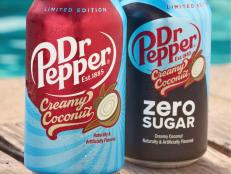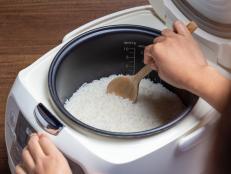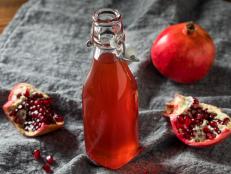The Southeast Asian Pantry
A well-planned and well-stocked pantry makes whipping up Southeast Asian meals a snap. While you can certainly venture off to Southeast Asian markets, know that for the most part you can create authentic meals with ingredients that are readily available. For starters, stock your refrigerator with lemongrass, garlic, ginger, scallions and shallots at all times. Your dry storage should also never be without fish sauce, the salt of Southeast Asia, rice vinegar, curry powder, cinnamon sticks and star anise. In addition to this basic pantry, feel free to look for the following ingredients to add complexity to your food:
Curry paste: Available in red, green and yellow versions, curry pastes are used to spice up sauces, such as peanut sauce, or used as a base for soups and stews.
Curry powder: Just as pungent but not as spicy as curry pastes, curry powder is made with ground spices including cumin, caraway, coriander and fenugreek. Yellow curry powder is readily available in supermarkets.
Cinnamon sticks: Keep this whole spice on hand to flavor savory stews and curries.
Coconut milk: Malaysia is the motherland of the coconut palm, so the rich, creamy milk is frequently used in Southeast Asian soups, curries and desserts. You can find it in Asian markets and most supermarkets.
Coriander: Ground coriander seeds are commonly used in curry blends and soups. Coriander leaves, more commonly known as cilantro, are used in curry pastes, sauces and as a garnish in many Southeast Asian dishes. The citrusy flavor lends itself well to highly seasoned food.
Daikon: This Asian radish is used in raw in salads, pickled with cucumber, carrot and rice vinegar, or cooked in stir-fries. Buy them fresh at Asian markets.
Fish sauce: Often referred to as "the salt of Southeast Asia," this liquid seasoning is made from salted, fermented anchovies. Use it to enhance stir fries, sauces, stews and soups.
Galangal: This pungent rhizome is used in sour soups, such as the classic Thai spicy and sour shrimp soup, as well as numerous stews and marinades. Fresh galangal resembles ginger in appearance, but has a pungent, citrusy taste. Buy it fresh, frozen, brined or dried in Asian markets.
Green papaya and mango: Unripe green papaya and mango are often used like vegetables. Shred either fruit and dress it in a sweet lime and fish sauce dressing for a refreshing, crunchy salad.
Hoisin sauce: A thick, sweet and savory condiment, Hoisin sauce is made with fermented soybeans. It's often used as a dipping sauce direct from the jar, and it's also a major ingredient in peanut sauce and marinades.
Kaffir lime leaves: These fragrant leaves are available fresh, frozen or dried, and lend an important, citrusy flavor to many Southeast Asian curries and soups. Dried leaves are available in Asian markets.
Lemongrass: A fibrous grass, lemongrass has citrus notes without the sourness associated with citrus fruit. It is crushed or sliced and added to infuse stocks, or grated and added to marinades or spice pastes.
Mint: Fresh mint is commonly used as a cooling garnish to spicy
soups and stews, and mint leaves are also an important ingredient in
refreshing summer rolls.
Mung bean sprouts: Mung bean sprouts are one of the most widely used vegetables in Southeast Asian cooking. They are added to rice noodle soups just before serving, or stir-fried in noodle dishes, like the classic Pad Thai.
Mushroom soy sauce: This sauce, which contains straw mushroom extract, is sometimes used to marinate small game such as squab or quail.
Palm sugar: This course, unrefined sugar adds a bold sweetness to herb and spice pastes, sauces and marinades. Find it in Asian markets, or substitute white sugar.
Rice: Rice is often served as a neutral "canvas" on which other flavors and textures can be enjoyed. Serve individual bowls of long-grain white rice alongside family-style vegetables and proteins. Pick up a bag of short-grain sticky rice to serve with saucy curries.
Rice noodles: Rice noodles are the base for many Southeast Asian dishes. Medium wide noodles are considered an all-purpose noodle, and can be used in stir fries, soups, salads and as an accompaniment to meat dishes. Supermarkets have some dried varieties, while Asian markets often have fresh and dried noodles.
Rice paper: Roll this translucent paper around veggies and proteins for deep-fried spring rolls or fresh summer rolls.
Sriracha sauce: This Thai hot sauce is named after the seaside town of Si Racha, which is located on the gulf of Thailand. This widely used sun-ripened chile table condiment is used as widely in Southeast Asia as ketchup is in America.
Sweet soy sauce (kecap manis): This sweet soy sauce is used direct from the bottle to dip spring rolls and all sorts of grilled foods, and as a table condiment in Indonesian and Malaysian cuisines.
Thai basil: This unique herb has a licorice note, and is used in curry pastes, sauces, soups and as a garnish. Thai basil's flavor is unique and has little in common with Italian basil, which will not do as a substitute. If you cannot find it, use fresh mint or cilantro for a different but appropriately Asian flavor.
Thai chiles: These small, thin peppers provide the characteristic spice in many Southeast Asian dishes. Also known as "bird chiles" because drying causes the chile to hook like a bird's beak, they pack a fiery punch that doesn't dissipate with cooking. Buy them fresh or dried in Asian markets.
Tea: In Southeast Asia, black or green tea is often served at a meal's end to aid digestion.





















































